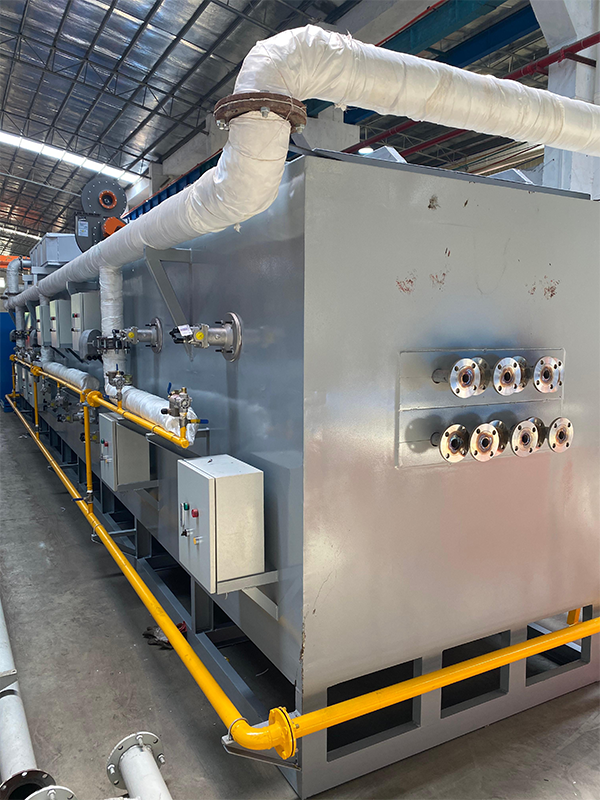LPG Gas Continuous Coil pipe Bright Annealing Furnace
Aug. 20, 2025
I. Applicability of LPG Gas Heating
LPG (liquefied petroleum gas) can serve as a fuel for continuous coil bright annealing furnaces due to its high calorific value, which meets the temperature requirements for annealing metallic materials. However, compared to natural gas, LPG combustion may produce more pollutants, necessitating optimized furnace atmosphere control to minimize oxidation defects and the installation of dust removal equipment to reduce particulate emissions.
II. Equipment Structure and Functional Characteristics
Furnace Zoning:
Continuous coil bright annealing furnaces are typically divided into preheating, heating, and cooling zones. The LPG heating system must integrate with zoned temperature control modules, utilizing thermocouples for monitoring and proportional regulation via solenoid valves to ensure temperature uniformity (within ±5°C) across zones, preventing material performance variations caused by temperature fluctuations.
Atmosphere Protection System:
To prevent coil surface oxidation, protective gases such as ammonia decomposition gas, hydrogen, or nitrogen are introduced. Strict air-fuel ratio control during LPG combustion is essential to avoid localized high temperatures that generate nitrogen oxides (NOx). Low-NOx burners or exhaust gas recirculation technology can be employed to reduce emissions.
Cooling System:
The cooling zone adopts forced convection circulation technology, controlling cooling rates through independent cooling hoods and inner shield structures. The LPG heating furnace must coordinate with the cooling system to ensure phase transformation occurs under protective atmosphere, maintaining surface finish.
III. Technical Advantages and Limitations
Advantages:
Flexibility: LPG offers convenient storage and transportation, making it suitable for regions without natural gas pipelines or mobile heat treatment applications.
Cost-Effectiveness: When LPG prices are low, fuel costs may be lower than electric heating, though overall expenses must account for equipment maintenance and environmental retrofitting.
Process Adaptability: Adjusting combustion parameters allows LPG heating to meet annealing temperature profiles for diverse coil materials (e.g., stainless steel, copper alloys).
Limitations:
Environmental Impact: LPG combustion generates higher CO₂ and NOx emissions than natural gas, requiring tertiary filtration systems or selective catalytic reduction (SCR) units to comply with environmental standards.
Thermal Efficiency: LPG may exhibit slightly lower combustion efficiency than natural gas, necessitating regenerative burners or high-temperature air combustion technology to enhance energy utilization.
Safety Risks: LPG storage in pressurized cylinders demands robust leak detection and emergency shutdown systems to ensure operational safety.
IV. Typical Application Scenarios
LPG gas-fired continuous coil bright annealing furnaces are ideal for:
Small-Batch Production: Low equipment costs and compact footprints suit small-to-medium enterprises or customized coil processing.
Mobile Operations: The portability of LPG cylinders provides significant advantages in remote or temporary worksites.
Specialized Material Processing: For applications like copper strip annealing requiring rapid heating (recrystallization completion in 14 seconds at 700°C), LPG heating combined with gas suspension heat transfer technology enables efficient processing.










